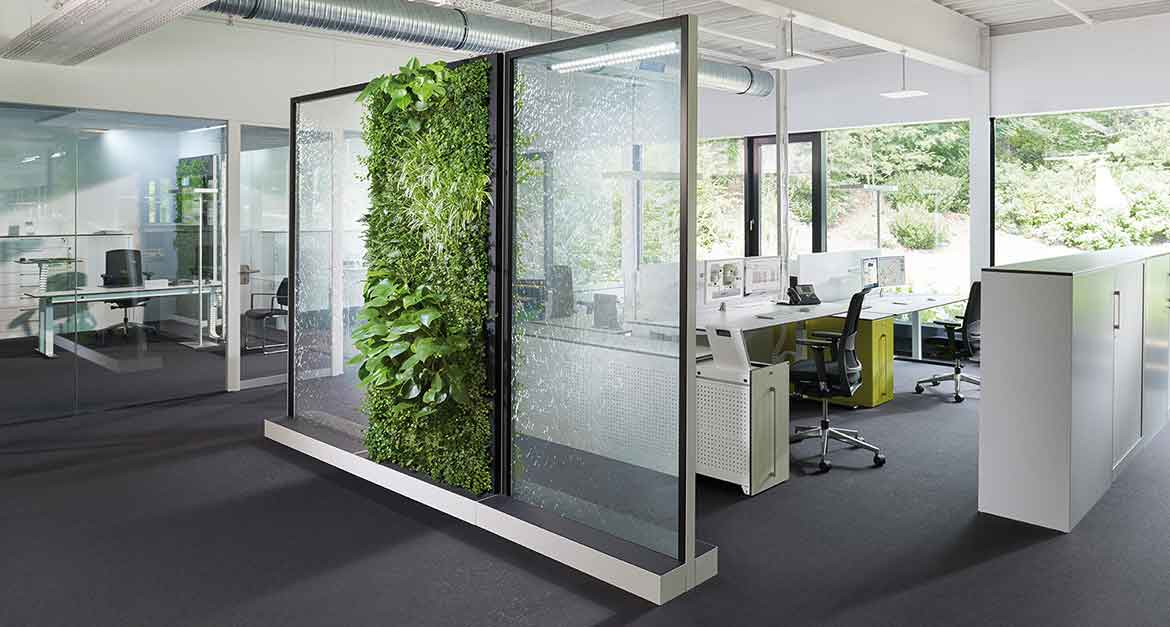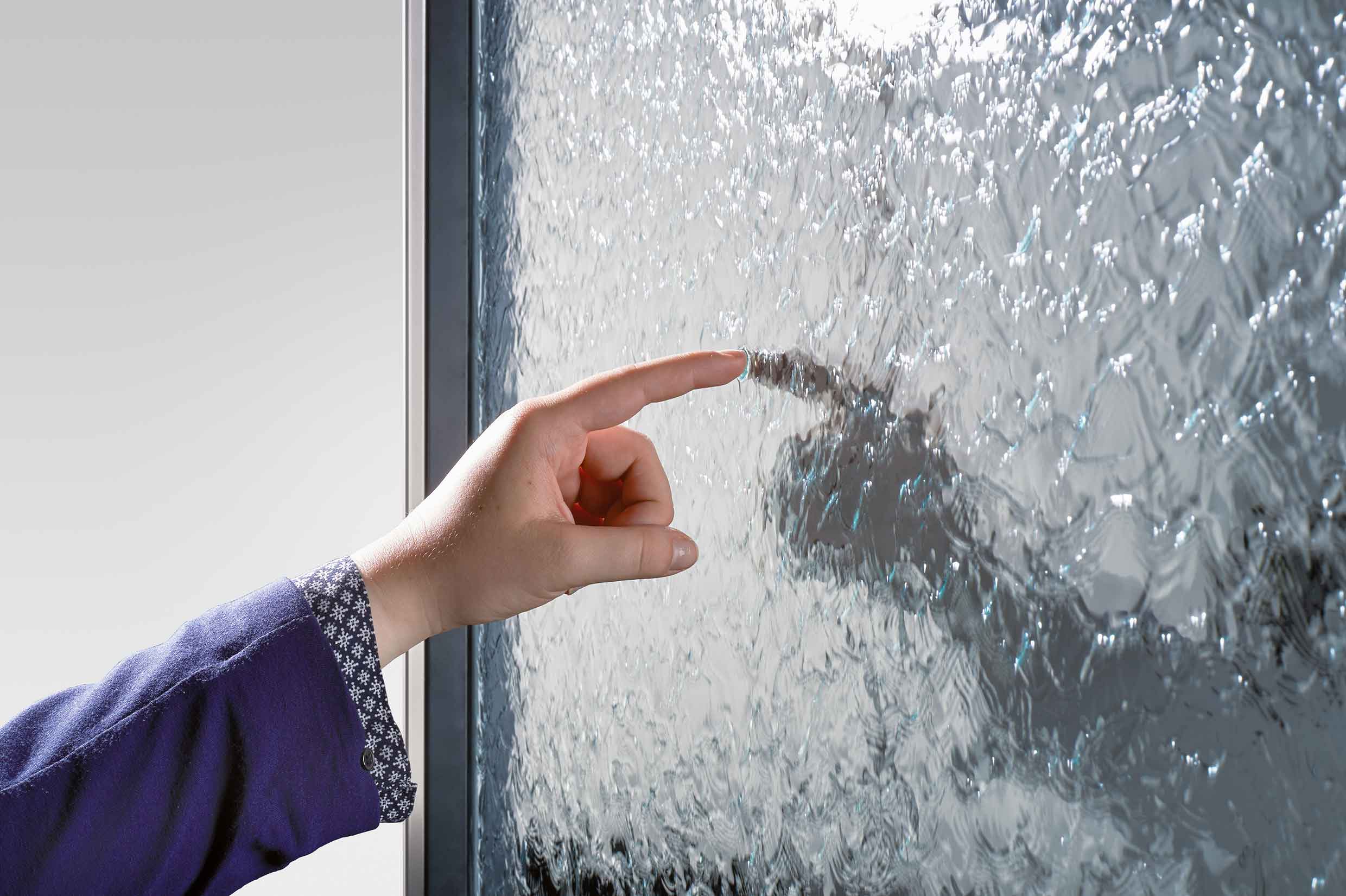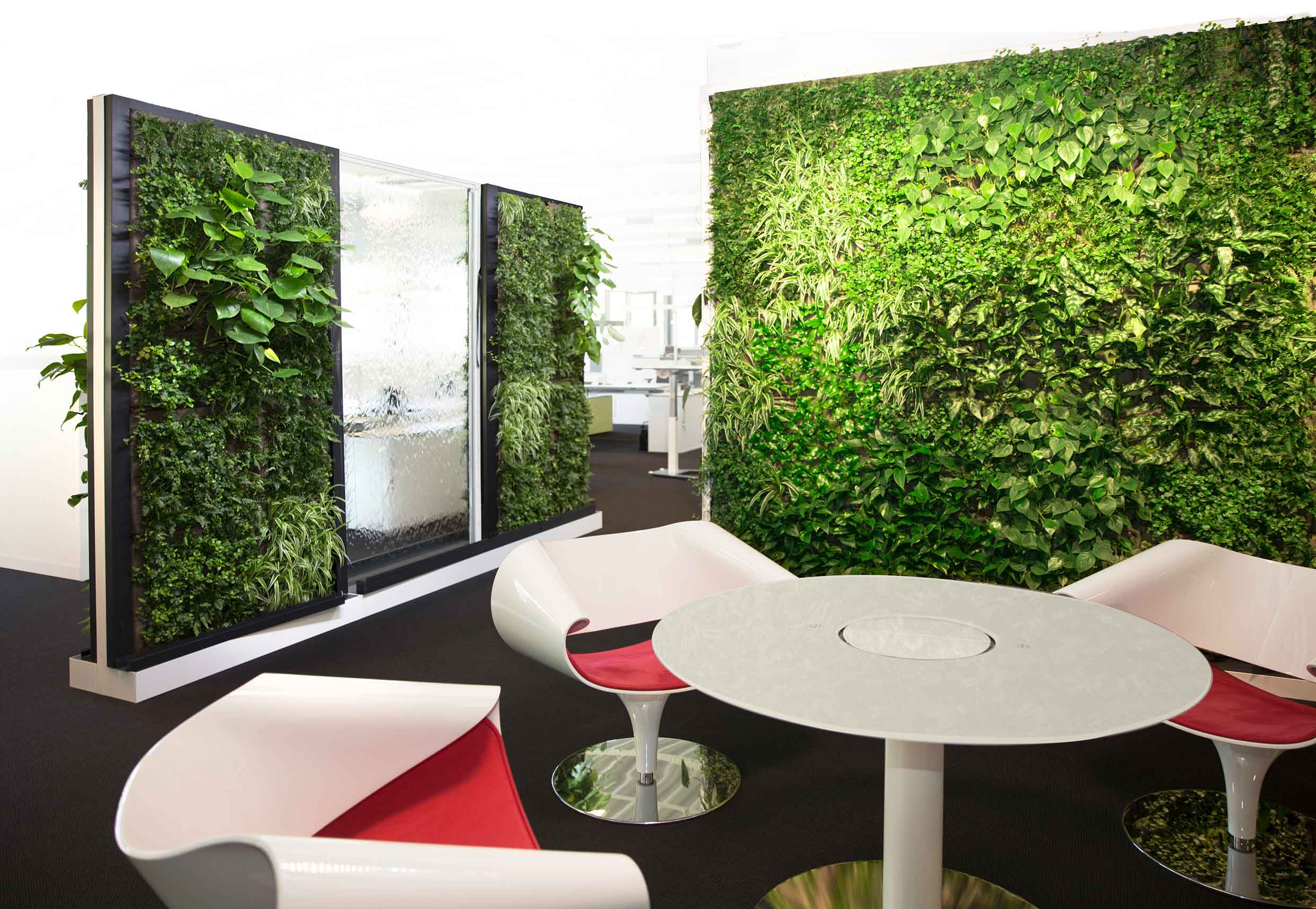
The chilled water wall is a comfortable form of air conditioning which also effectively reduces humidity in rooms. Here it is used with a green wall in an office landscape.
Air conditioning systems in buildings ensure a defined indoor climate as far as temperature, humidity and air quality are concerned. However, dry and cold air is often blown into the room, which has negative effects. Users frequently complain about draughts and the noise generated by air conditioning systems. In hot, humid countries, rooms also tend to be cooled too much because the air conditioning system is set to reduce the level of humidity rather than control the ambient temperature.
As an alternative to air-conditioning units, large-surface cooling elements such as chilled ceilings have become established on the market. Their advantage and efficiency lie in their dual effect: they not only cool the air as it moves over the surface but also form a sink for the long-wave radiation emitted from people and objects in the room. In addition, they are silent and do not cause annoying draughts. However, a major drawback is their limited cooling capacity.
The temperature on the surface of a chilled ceiling must be kept at a certain level above the dew point of the indoor air in order to prevent mold from growing. This means that surface humidity should be kept slightly below 80 percent relative humidity, which in turn limits the cooling effect of the element. Chilled ceilings are also not suitable for reducing humidity in rooms because the moisture contained in the air may not be allowed to condense.
With the development of the chilled water wall, the researchers at the Fraunhofer Institute for Building Physics IBP have succeeded in combining the advantages of different systems, while at the same time eliminating the disadvantages of air-conditioning units and also circumventing the limiting factors of conventional surface cooling systems.

